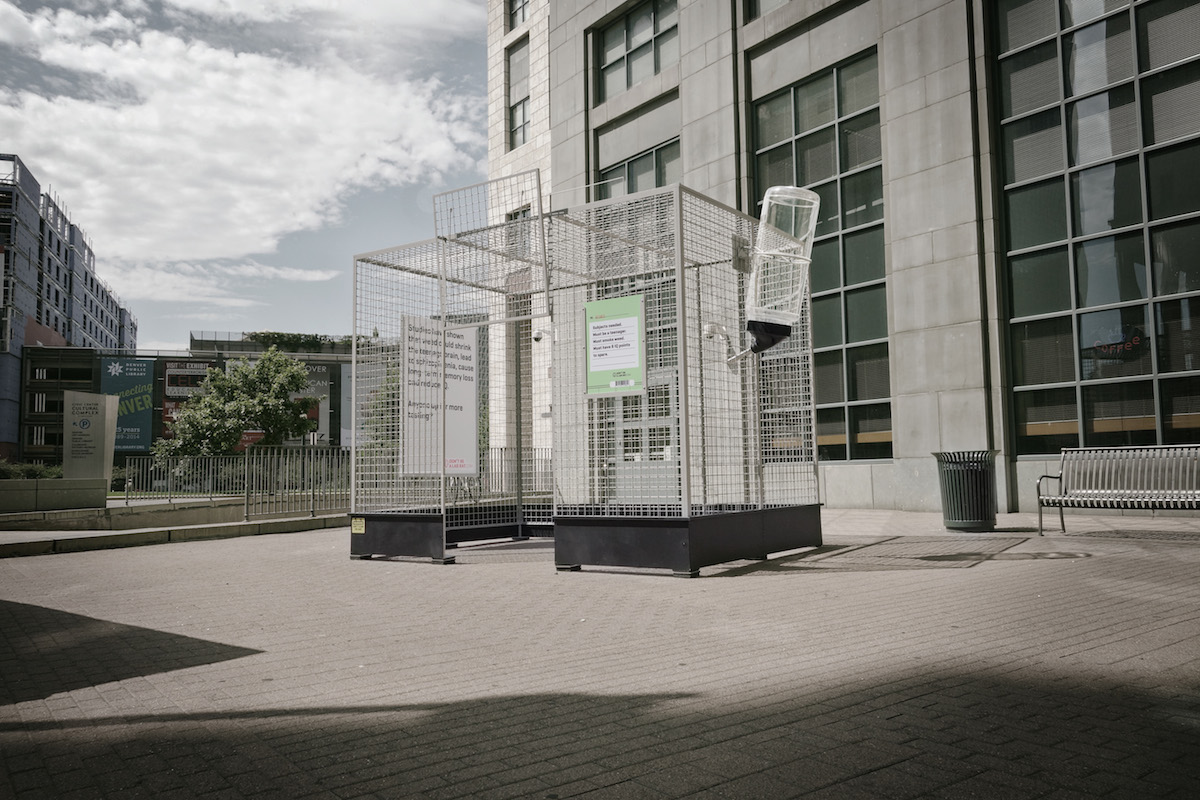The Local newsletter is your free, daily guide to life in Colorado. For locals, by locals.
Anti-drug advertising campaigns have a long and checkered history. From “Just Say No” to “This is Your Brain on Drugs” to “Not Even Once,” these efforts usually spur debate, sometimes trigger changes in public policy, and almost always provide fodder for standup comedians.
When adult use of marijuana was legalized in Colorado, one of the most pressing questions became how we were going to keep our kids from abusing it. The state’s first effort at post-legalization education lands this week with the “Don’t be a Lab Rat” (DBALR) campaign targeted at middle- and high-school-age children. Governor Hickenlooper’s office created it in cooperation with a few local design and advertising firms, and its first salvo will surely spark conversation.

Starting Monday, oversized cages will pop up outside the Denver Public Library, at the Denver Skatepark, and along the Pearl Street Mall in Boulder. The cages, which are big enough to fit over a typical bus shelter, are adorned with a stylized, jumbo water bottle and signage related to the campaign. These banners display messages such as statistics about the troubling relationship between teen marijuana use and schizophrenia, lowered IQ, addiction, and depression. A mobile version of the cage will make appearances at several Red Rocks shows and movie nights, at Coors Field, and at a few other teen-focused venues and events through late-September. In addition, the DBALR campaign will run commercials on TV, YouTube, and in Denver-area movie theaters.
Even the most ardent cannabis legalization proponents have to concede—or should—that anyone under 21 shouldn’t use the drug, and those under 25 probably shouldn’t. That’s not to say that a single slip-up will cause a 16-year-old’s IQ to plummet or give him a mental illness. Although plenty of anti-legalization folks try to frame their arguments that way as a scare tactic, the science is far more complex. This is where DBALR’s message is most effective: Rather than trying to frighten kids about marijuana, the signs and ads calmly and rationally point out that the science about marijuana’s long-term effects is still evolving, so why risk it with your own health? This may not prove to be a foolproof message, but at least it respects teenagers enough to welcome them into the conversation rather than preach to them from on high.
How the cages are received will be interesting to watch. The governor’s office has already received pre-rollout pushback from certain marijuana advocates and at least two area public school districts whose representatives say the cages are too evocative of prisons. Well, yes. And…so what? Is the objective to somehow deny that prisons exist? Is it to deny that a teenager who abuses marijuana may well set himself on a path to incarceration?
It’s one thing to wonder if DBALR’s message will resonate; studies have questioned whether anti-drug ad campaigns in general actually work. It’s another to impulsively reject DBALR out of an overprotective sense that we must shield our teenagers’ eyes from some of the harsh realities of adulthood. We won’t know for a good year or so if DBALR’s messaging hits its intended target—but we don’t need time or surveys or studies to know that whether a cage is in a lab or a prison, nobody wants to end up in one. The sooner we can have honest and open conversations with our children about this, the better prepared they’ll be to make the intelligent and informed decisions our increasingly complex world requires.
Follow 5280 editor-at-large Luc Hatlestad on Twitter at @LucHatlestad.








